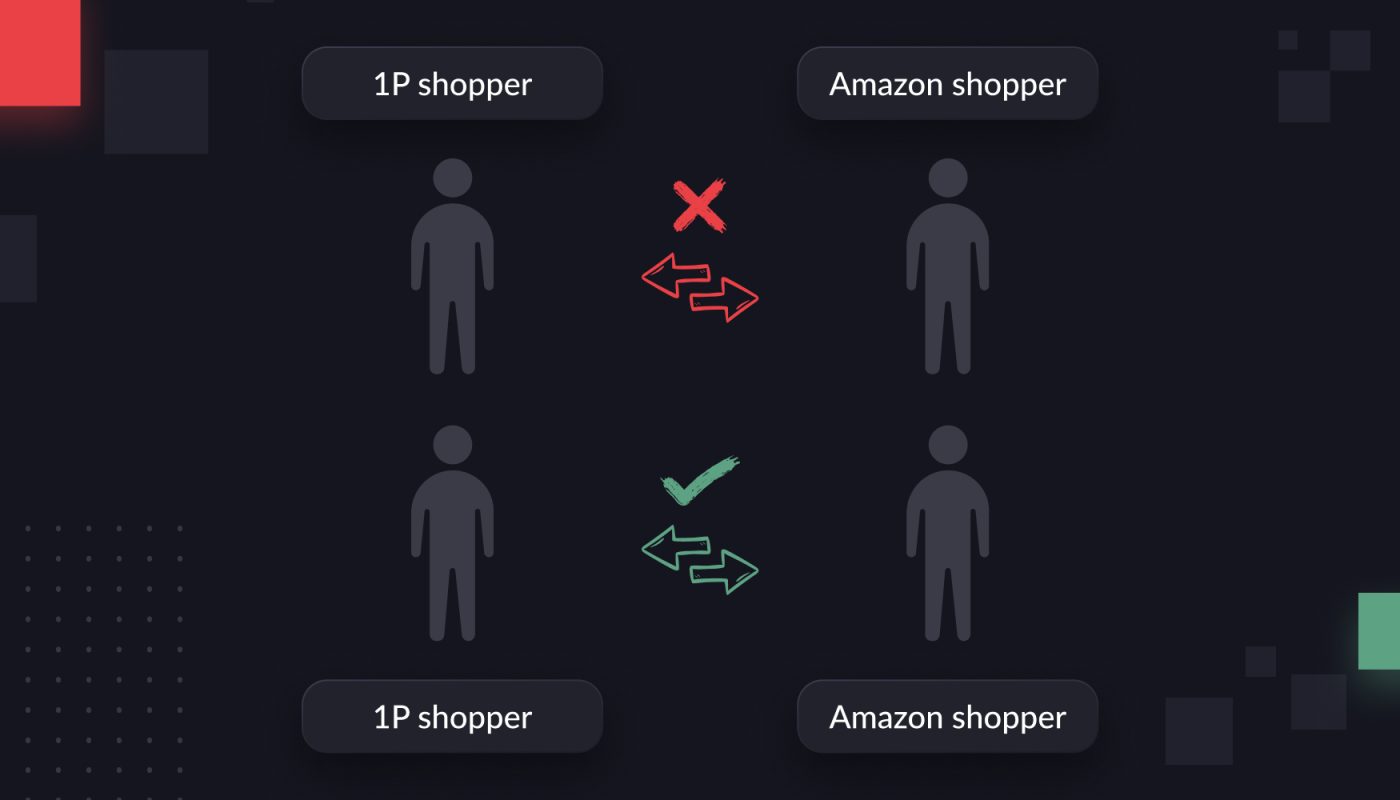One of the most exciting new capabilities on Amazon is the ability to measure the overlap between your Amazon and non-Amazon shoppers.
For the first time, your first-party data and your Amazon data don’t have to live in separate siloes. Upload your first-party data into Amazon Marketing Cloud, and Amazon will connect those shopper interactions on Amazon back to their interactions with your brand off of Amazon.
If you interface with your shoppers in some way outside of Amazon, this is a big deal. It doesn’t matter whether you sell DTC through your website, operate a newsletter, or sell products in physical stores. You can now upload any first-party data set you have, and connect it directly to Amazon.
Intentwise Explore, our platform to supercharge AMC, now supports these 1P uploads. We’ve been experimenting with it for several clients, and we are extremely excited about the results. We are going to be sharing more of our learnings in the coming weeks.
But for now, we wanted to explain a common point of confusion. When you start doing first-party uploads, one thing you’ll quickly encounter is the “match rate.” Essentially, match rates answer this question: Of all the shoppers in your first-party data set, what percentage was Amazon able to trace back to shoppers in its ecosystem?
A “matched” shopper had some interaction with your brand through an Amazon. That could mean the shopper bought from you directly, but it could also just mean they saw your Amazon DSP ad on a streaming site or on Twitch.
So what is a match rate, and how much can you read into them?
What kinds of match rates are normal?
First, just a little bit more explanation of how 1P uploads work. When you upload your 1P data into AMC, you can tag it how you want. Maybe you want to break out Active vs. Inactive customers, and so you segment your 1P data accordingly.
Are your Inactive DTC shoppers buying from you on Amazon? Now you can find out.
Once a match happens in AMC, you can see exactly what specific cohorts of shoppers did on Amazon. You can connect each shopper cohort to certain events on Amazon, like a Subscribe & Save, an add to cart, a product page view, and more, to get a holistic view of their shopper journey.
So you can know, for instance, that your DTC customer actually first saw your DSP ad.
But not every cohort of 1P shoppers is going to be matched in AMC. That’s where the match rate comes in.
At Intentwise, we’ve already assisted a number of our customers with connecting their 1P data to AMC, and we’ve seen quite a range of match rates.
So what’s normal? It really depends. One client had a roughly 90% match rate. Several others have had roughly 50-65% match rates.
The match rate might also vary depending on the country. We’ve seen cases where the U.S. match rate is higher than the Canada match rate, for example.
What can my match rate tell me?
Overall, you need to evaluate match rates in their proper context. It’s hard to speak generally about what a certain match rate means, since it’s often specific to your brand.
A low match rate could simply mean that your first-party data wasn’t that good. Maybe all you uploaded was a list of first and last names, and Amazon couldn’t definitely say whether the John Smith who subscribes to your newsletter is the same John Smith who brought your toothbrush product last month.
Other times, a low match rate might be more telling. A low match rate might mean that there just isn’t a lot of overlap between your 1P shoppers and your Amazon shoppers.
For instance: If you upload 1P data from physical stores, and get a 10% match rate through AMC, that probably means your physical store shoppers aren’t seeing any of your Amazon ads.
That might be good news, if you’re trying to keep your Amazon campaigns as separate as possible. Or it might be an opportunity to engage that group of in-store shoppers with, say, DSP ads.
On the flip side, if your match rate is 90%, that means your Amazon shoppers and your physical store shoppers are often one in the same. Shoppers are seeing your products on Amazon or in ads, but then they are making purchases in physical stores.
An essential point of clarification here: Remember that a matched shopper is not necessarily someone who buys from you via both your 1P sources and via Amazon.
A match just means your 1P shopper at some point interacted with you via the Amazon ecosystem, such as through Amazon DSP ads.
They may not have actually purchased. Even in cases where the match rate is 80+%, we’ve seen that the actual purchase overlap—meaning, the number of customers who bought from you both on Amazon and through your DTC or physical store—hovers around 3-5%.
How do I improve my match rate?
A low match rate is not necessarily something you need to fix. As we discussed, if your match rate is low, that might just be because these 1P shoppers just aren’t seeing your Amazon ads or clicking on your products on Amazon.
That said, in other cases, you can blame a low match rate on weak 1P data.
A quick explainer: You can upload multiple categories of 1P data into AMC. Emails, addresses, phone numbers, and so on all fall into the category of Personally Identifiable Information, or PII. This data is hashed to protect user privacy, and uploaded into AMC.
There are other categories of data you can use in AMC, too. For instance, many advertisers might have Mobile Ad IDs—unique identifiers assigned to each specific mobile phone.
Amazon says that, the more data points you provide, the better your match rate will be. Providing as many data sets as you can—hashed PII fields as well as Mobile Ad IDs, for example—can help improve your match rates.
We’ve also found that the more granular your PII data, the better the matches. If you can segment PII data by country, for instance, your match rate will probably go up.
You can also improve the match rate by leveraging third-party services like LiveRamp and Acxiom, which can help resolve the identity of different shoppers.
Have other questions about first-party uploads?
On July 10, our CEO Sreenath Reddy will be hosting a live demo breaking down exactly how 1P uploads work. He’ll show you what is possible with 1P uploads and what to watch for.
He’ll also answer any questions you might have, so be prepared to ask whatever’s on your mind.
Register for the webinar here, and/or fill out our form if you’re interested in learning more about the 1P uploads feature in Intentwise Explore.







